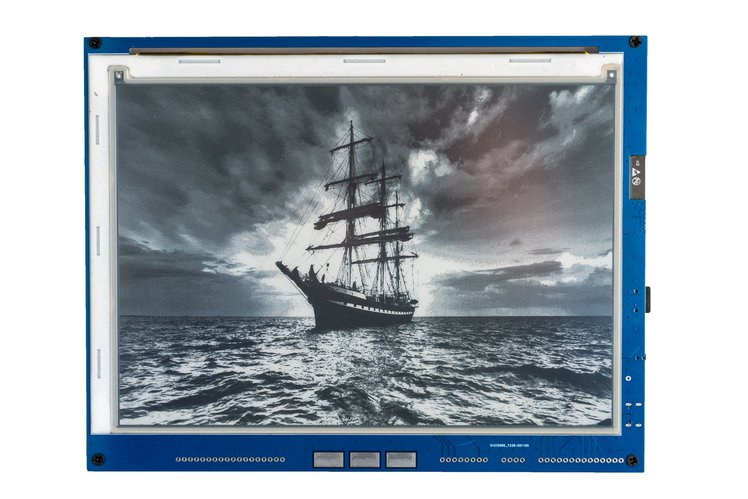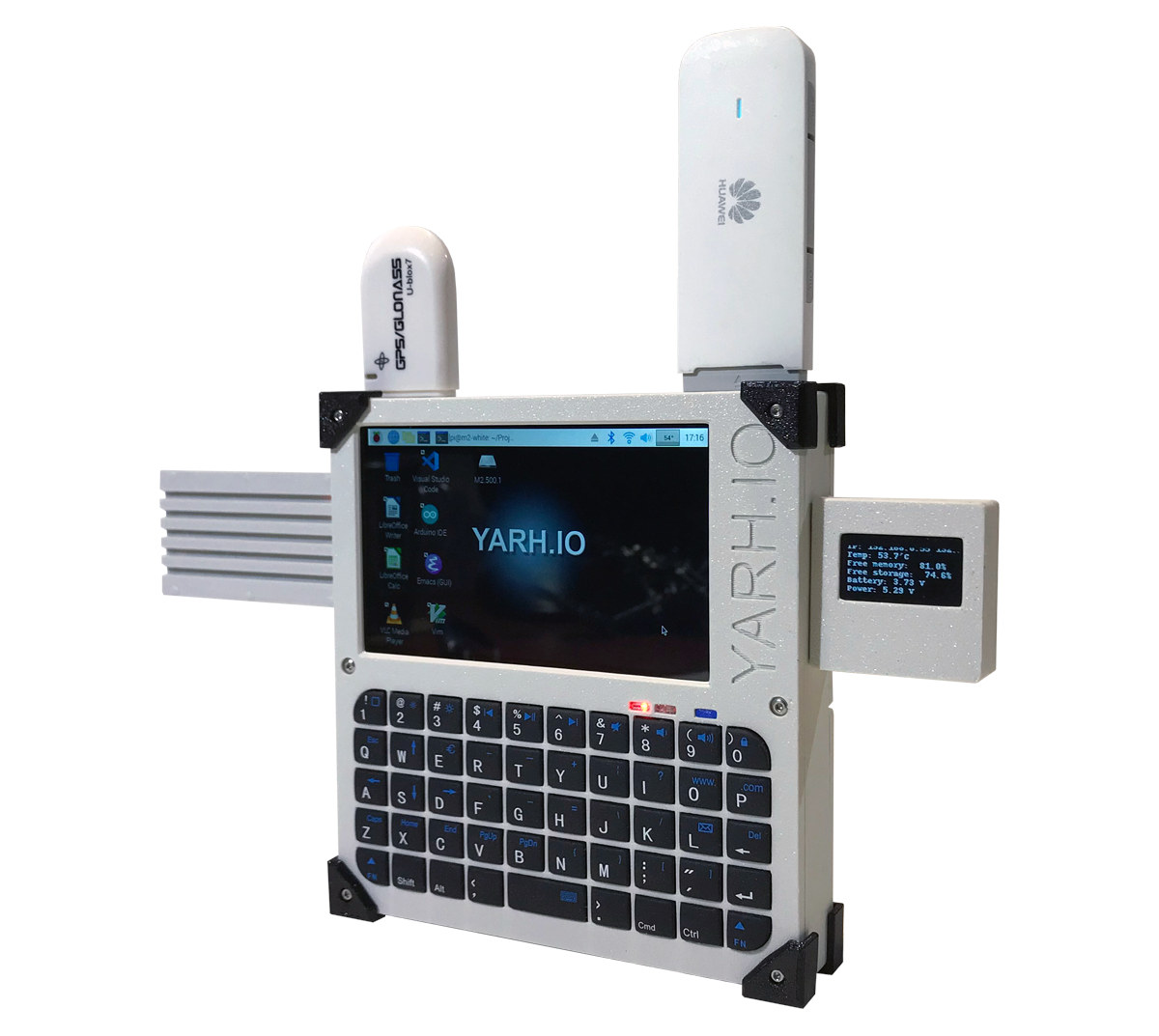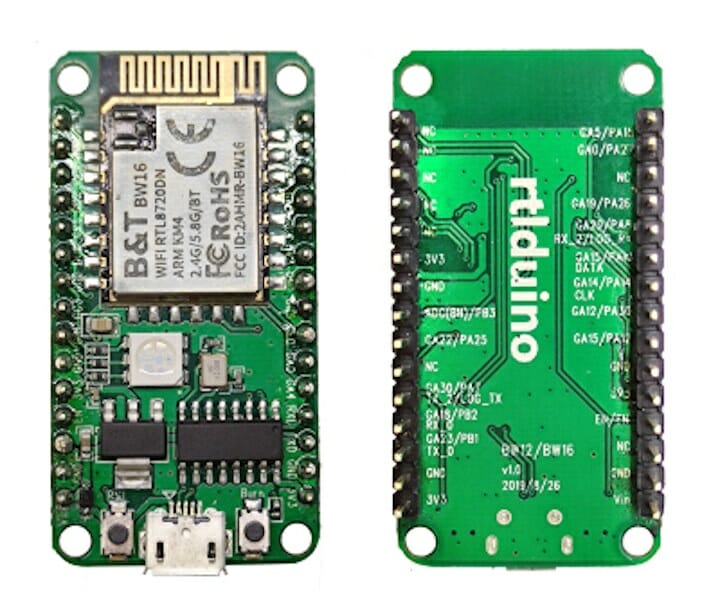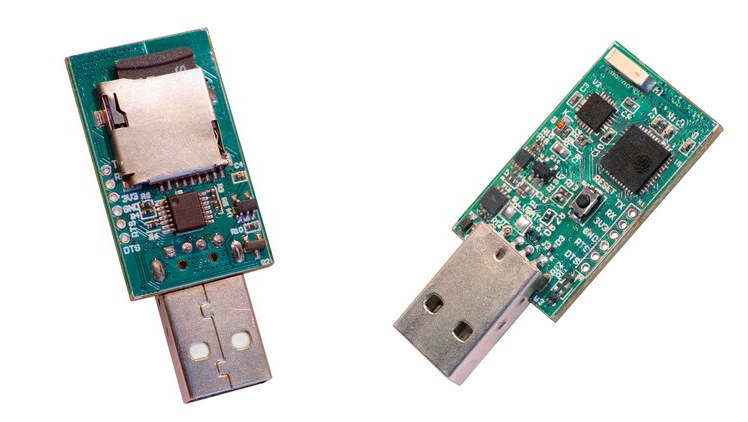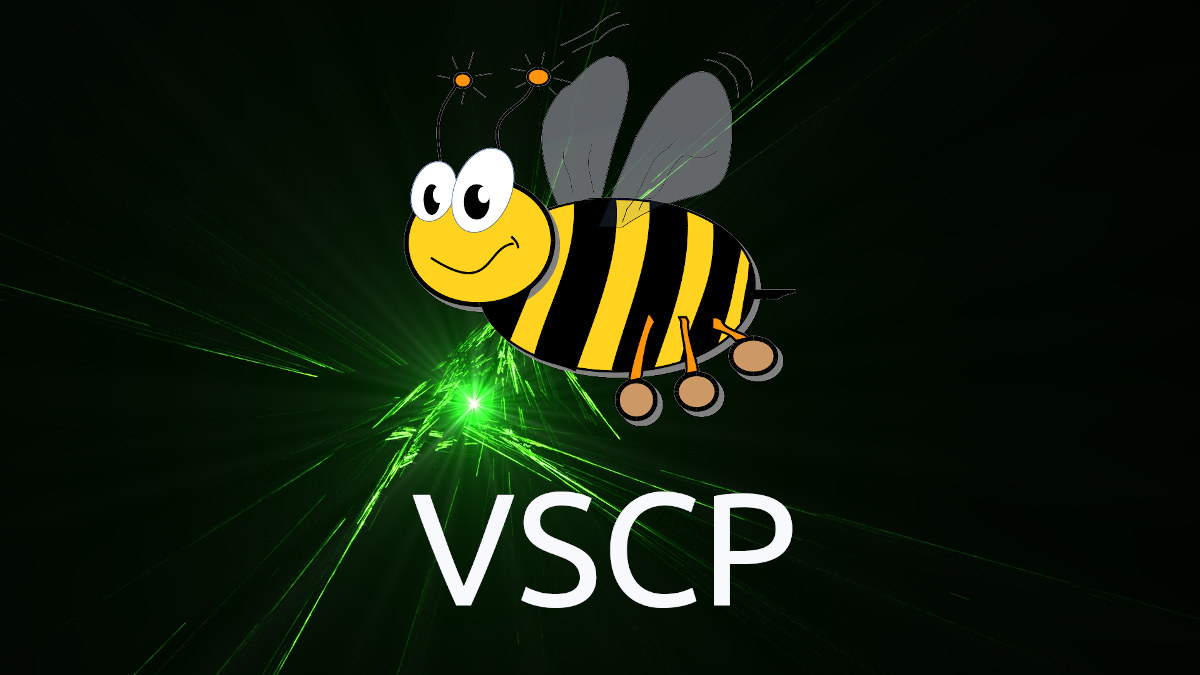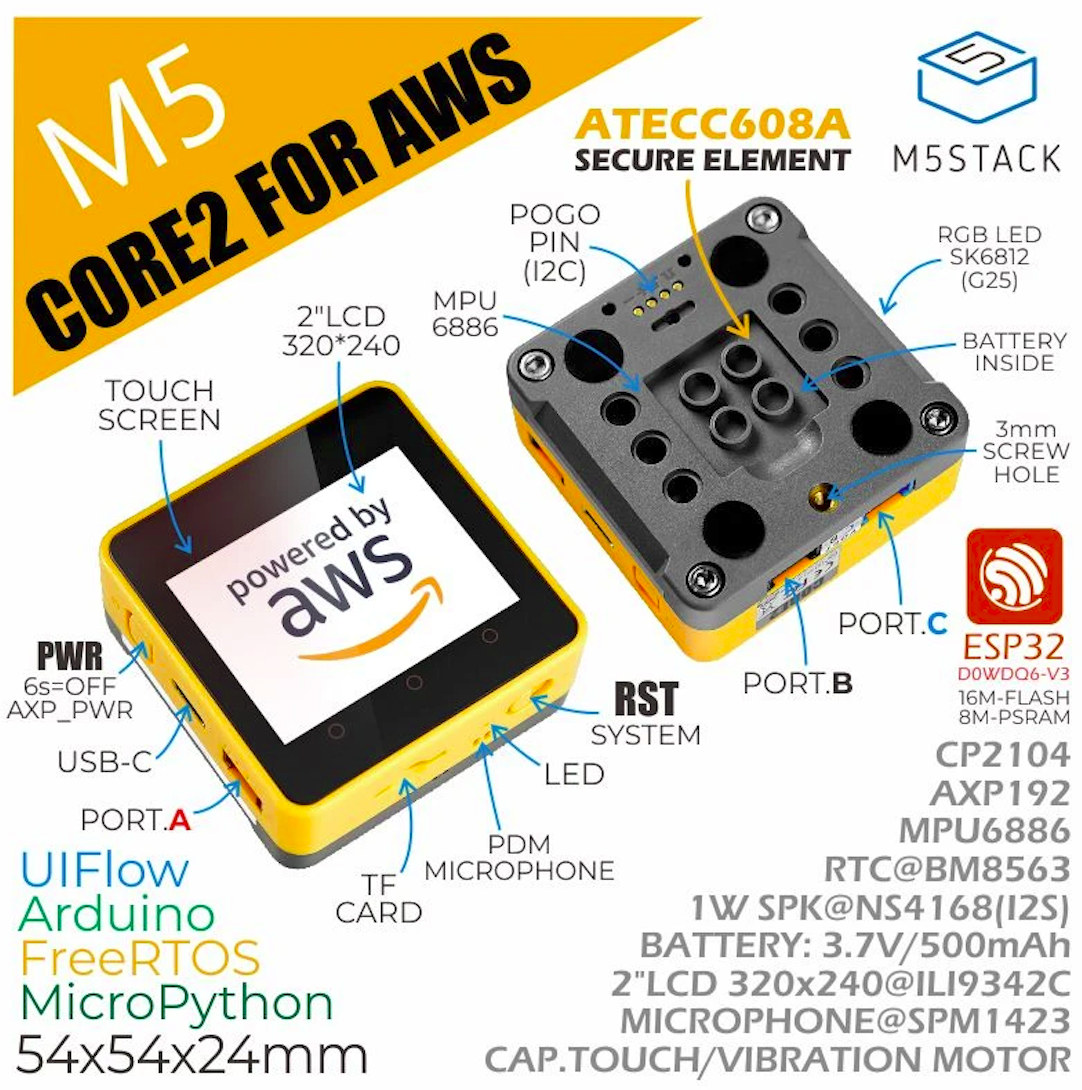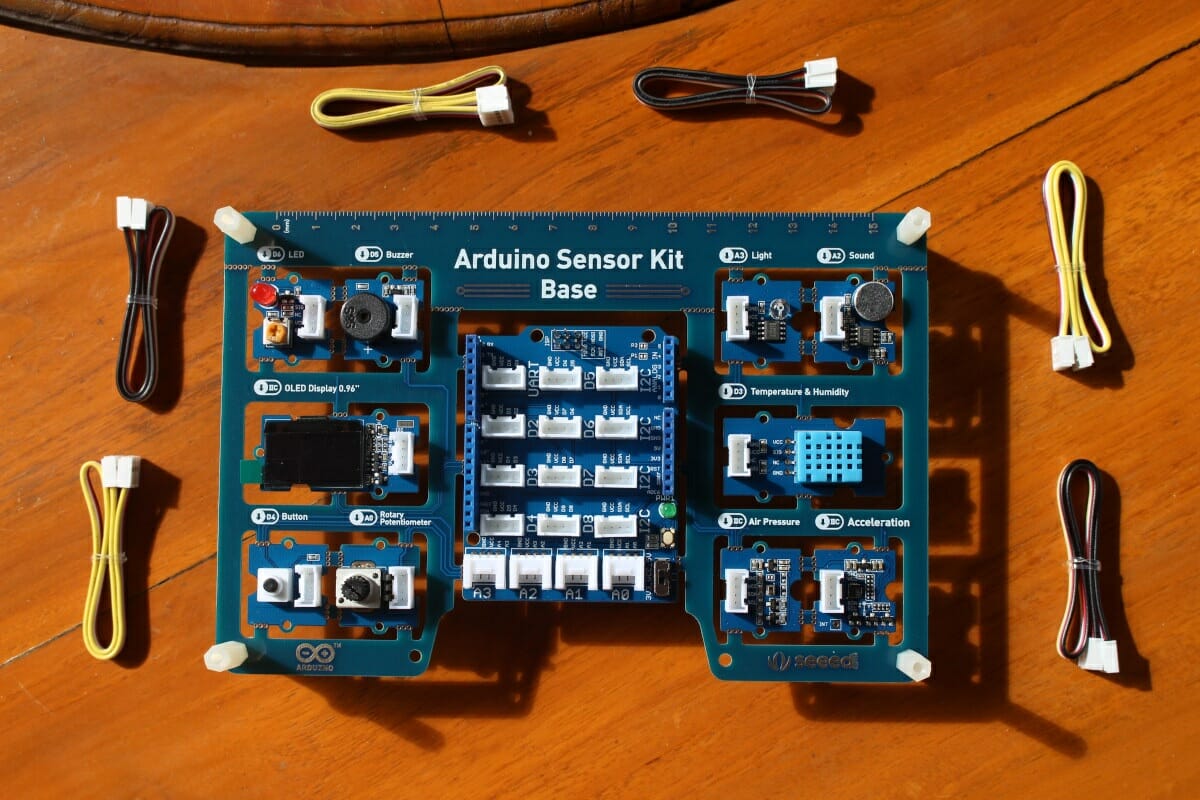Inkplate 6 is an ESP32 powered wireless e-Paper Display based on a recycled Kindle E-reader display, and that e-Radionica launched in December 2019 via a crowdfunding campaign. The company says backers were “happy about the versatility and simplicity of the display” but wished for a larger display, a faster refresh rate, and extra features. This gave birth to an upgraded version: Inkplate 10. The new ESP32 wireless display comes with a recycled 9.7-inch display with 1200 x 825 resolution, up to 38% faster refresh rates, as well as extra GPIO pins, an RTC clock, a USB Type-C port, and lower power consumption. Inkplate 10 specifications: Wireless module – ESP32 WROVER module with dual-core ESP32 processor with Wi-Fi & Bluetooth 4.0 (BLE) connectivity, 8MB PSRAM, 4MB flash External storage – MicroSD card socket Display – 9.7-inch, 1200 x 825 e-paper display with support for grayscale, partial updates, and quick refresh cycles: […]
Stripped-down Raspberry Pi 3B+ SBC powers YARH.IO Micro 2 DIY handheld PC
We’ve already seen a few DIY Raspberry Pi-based handheld computers in the past with the likes of Zero Terminal V3 or hgTerm powered by a Raspberry Pi Zero and a stripped-down Raspberry Pi 3 board respectively. So why not another? YARH.IO Micro 2 DIY handheld PC is based on a Raspberry Pi 3B+ SBC stripped from its Ethernet port, whose double stack USB connectors have been replaced with single stack USB connectors. The DIY computer also adds off-the-shelf parts with a 4″ touch screen display and a Bluetooth keyboard without touchpad, and gets its power from a 3,500 mAh battery. YARH.IO Micro 2 key components and features: SBC – Stripped-down Raspberry Pi 3B+ SBC Display – HyperPixel 4.0 4-inch IPS display with 800×480 resolution, touchscreen from Pimoroni Keyboard – 49-key mini keyboard with Bluetooth 3.0 ($10) USB – USB straight and right-angle connectors for four USB ports around the device […]
MKR SharkyPro BLE, Zigbee, OpenThread development board follows Arduino MKR form factor
Just a few days ago, we mentioned STMicro launched STM32WB5MMG wireless module to simplify Bluetooth LE, Zigbee, OpenThread connectivity by allowing 2-layer baseboards for the module. It turns out there’s also such a module from a third-party with namely Midatronics SharkyPro module based on STM32WB55, and the company also launched MKR SharkyPro I & II development boards following Arduino MKR form factor. MKR SharkyPro specifications: Wireless Module – SharkyPro module Wireless MCU – STMicro STM32WB55CG/CE dual-core Arm Cortex-M4 core at 64 MHz (application processor) and Arm Cortex-M0+ core at 32 MHz (network processor) with 512KB flash, 256KB SRAM Connectivity – Bluetooth 5.0 LE, Bluetooth Mesh 1.0, OpenThread, Zigbee, and other IEEE 802.15.4 proprietary protocols Antenna – Onboard chip antenna (SharkyPro I) or SMA antenna connector (SharkyPro I) Power 3.3V supply voltage Consumption – 13 nA in shutdown mode, 600 nA in Standby mode + RTC + 32 KB RAM Dimensions […]
$6 Rtlduino RTL8720DN dual-band WiFi IoT board features 2.4/5GHz Wireless MCU
There are plenty of WiFi modules for the IoT market, but those usually work at 2.4 GHz only. This may be an issue in areas where the 2.4 GHz spectrum is overcrowded. But two years ago, we were pleased to see the Ameba Z2 board offering dual-band (2.4GHz and 5Ghz) WiFi thanks to Realtek RTL8720CM wireless MCU, and last year, we discovered B&T BW16 dual-band IoT module based on RTL8720DN sold for under $4 before shipping. If you like the cheap price of the module, but do not feel like creating your own baseboard, or soldering wires to the module, you’ll be glad to know Rtlduino RTL8720DN board offers an easy way to evaluate RTL8720DN dual-band WiFi (and Bluetooth LE 5.0) microcontroller as it is fitted with a B&T BW16 module and comes in a form factor similar to NodeMCU ESP8266 board. Rtlduino RTL8720DN board Specifications: B&T BW16 wireless module […]
Maypole MicroSD card reader comes with ESP32 for WiFi, smart storage (Crowdfunding)
Several years ago, we covered Zsun WiFi card reader a tiny USB card reader with WiFi and a battery that allowed users to access files via USB or WiFi from any device. People managed to hack the device and run OpenWrt on the little MicroSD card reader, but this required either to open the hardware and do some soldering, or use another method that could potentially brick the hardware, so not an ideal solution. But now Akshar Vastarpara has come with a similar device. Maypole is an open-source hardware MicroSD card reader powered by Espressif ESP32 processor providing both WiFi and the resources for smarter storage. It comes with an optional battery too to access files even without having to connect it to a USB port. Maypole hardware specifications: Storage – Swappable MicroSD cards up to 32GB Wireless Connectivity WiFi 2.4 GHz WiFi 4 via ESP32 WiSoC, Up to 4 […]
Open-source VSCP IoT/M2M automation framework supports Arduino, Raspberry Pi
VSCP (Very Simple Control Protocol) is an open-source IoT framework that works on development boards like Arduino or Raspberry Pi, and lets you control IoT home automation tasks. The framework is highly scalable, has a very low footprint, and as such is specially designed for resource-limited devices. VSCP is an open-source standard protocol for m2m, IoT and other remote control and measurement applications. It enables simple, low-cost devices to be networked together with high-end computers and/or to work as an autonomous system, whatever the communication media is. The VSCP Protocol has two levels: Level 1 and Level 2. The protocol was primarily used in CAN networks (that is Level 1 for tiny microcontrollers) because CAN is cheap and reliable with high efficiency. However, VSCP can be used for faster transport layers such as TCP/IP, so here comes Level 2 which achieves better performance. We have already seen Souliss, an open-source […]
AWS IoT EduKit leverages M5Stack Core2 ESP32 hardware
M5Stack Core2 is a neatly packed ESP32 IoT development kit with a 2-inch touchscreen display, motion sensor, a microphone., and a built-in battery that was launched last September. The hardware has been selected by Amazon Web Services and gone through some small modifications including the addition of a secure element, and a yellow paint job giving birth the the “AWS IoT EduKit” hardware and software solution designed to “learn how to build IoT applications using AWS services through a prescriptive learning program”. M5Stack Core2 for AWS IoT EduKit specifications are pretty similar, but with a few tweaks here and there: SoC – Espressif ESP32-D0WDQ6-V3 dual-core Xtensa LX6 processor clocked at up to 240MHz with 520KB SRAM, Wi-Fi, and dual-mode Bluetooth connectivity External Memory – 8MB PSRAM Storage – 16MB flash storage, MicroSD card slot up to 16GB Display – 2-inch IPS LCD screen with 320×240 resolution (ILI9342C driver), and touchscreen […]
Arduino Sensor Kit Base is a large shield for Arduino UNO with 10 modules
Earlier this year, Seeed Studio introduced the Grove Beginner Kit for Arduino that included the Arduino UNO compatible Seeduino Lotus board placed at the center and ten pre-wired and detachable Grove modules to get started with sensors on Arduino with no cabling whatsoever apart from the USB cable. Arduino must have seen and liked the design, and Seeed Studio has collaborated with the Italian company to create the Arduino Sensor Kit Base with a very similar design, but with a twist as instead of an all-in-one platform with modules and an Arduino board, it’s a very large shield that seats on tops of Arduino UNO. The Arduino Sensor Kit base includes the following: Base shield with 16 Grove connectors, instead of just 12 Grove connectors on the Beginner Kit, including 7x digital connectors, 4x analog connectors, 4x I2C connectors, and one UART connector; A 3.3V/5V voltage switch is also included […]


